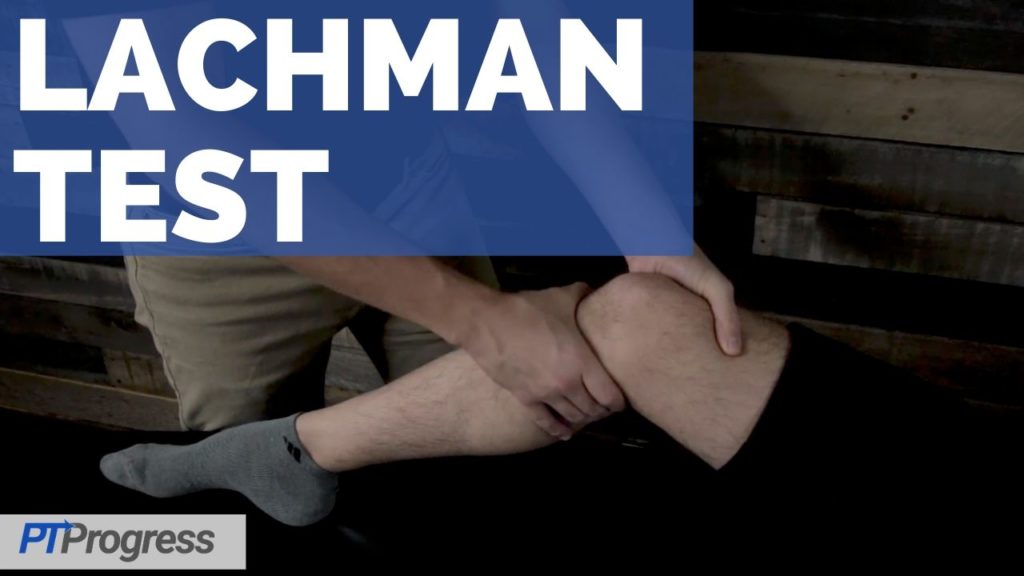
The Lachman Test is used to identify ACL tears and is considered the most sensitive test for ACL ruptures. The ACL or anterior cruciate ligament is one of four major ligaments of the knee and is a very common sports injury.
How to Perform Lachman Test
Position of Patient: The patient should be relaxed in the supine position. Passively place the patient’s knee into 20 degrees of knee flexion.
Performance: The examiner will stabilize the patient’s distal femur on the leg to be tested. With your other hand, place your thumb on the tibial tuberosity and firmly grasp the lower leg near the tibiofemoral joint. Apply an anterior force to the tibia to check for laxity or forward translation of the tibia.
How to Interpret Lachman Test
Positive Finding: A positive test occurs when the tibia translates forward beyond the resting position and more than 2 mm in comparison to the opposite knee. A positive test results in a ‘soft end feel’ as opposed to a ‘firm end feel’ in which the tibia does not translate forward, suggesting an intact ACL.
ACL tears are classified as grades 1 – 3 depending on the degree of translation. A special tool called a KT-1000 may be used to measure the amount of translation due to ACL compromise.
Test Accuracy / Reliability / Evidence:
Lachman Test Sensitivity and Specificity
Sensitivity = 0.81
Specificity = 0.81
+LR = 4.26
-LR = .24
Research Source: Van Eck CF, van den Bekerom MPJ, Fu FH, et al: Methods to diagnose acute anterior cruciate ligament rupture: a meta-analysis of physical examinations with and without anaesthesia. Knee Surg Sports Traumatol Arthrosc 2013; 21: pp. 1895-1903
Lachman Test Video
The Lachman Test is used to identify ACL tears and is considered the most sensitive test for ACL ruptures.
To perform the Lachman test, the patient should be relaxed in the supine position. Passively place the patient’s knee into 20 to 30 degrees of knee flexion.
The examiner will stabilize the patient’s distal femur on the leg to be tested. With your other hand, place your thumb on the tibial tuberosity and firmly grasp the lower leg near the tibiofemoral joint. Apply an anterior force to the tibia to check for laxity or forward translation of the tibia.
A positive test occurs when the tibia translates forward beyond the resting position and more than 2 mm in comparison to the opposite knee. A positive test results in a ‘soft end feel’ as opposed to a ‘firm end feel’ in which the tibia does not translate forward.

